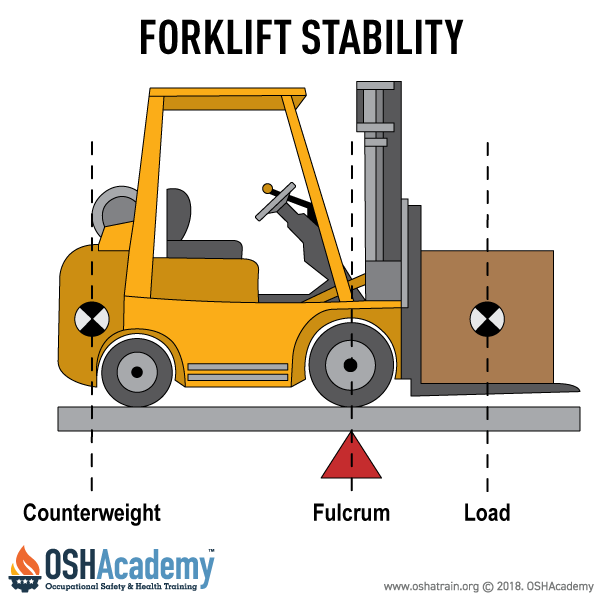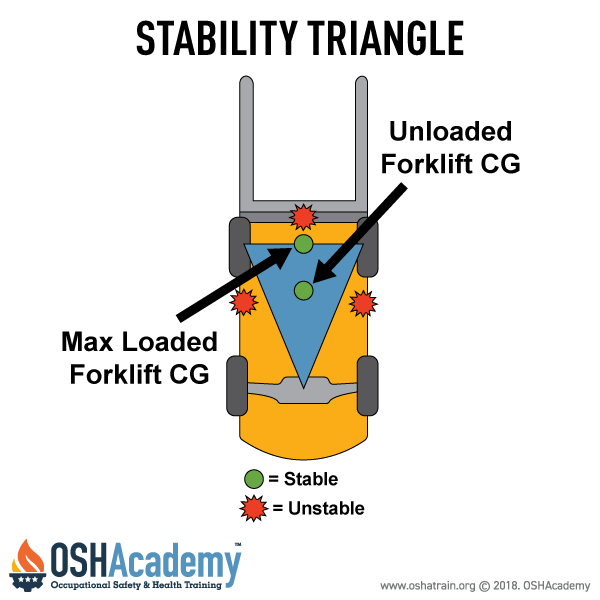Principles of Lifting Loads
A forklift works on the following four very important principles: fulcrum principle, stability triangle, center of gravity, and moment. These principles must be understood by all operators:
Fulcrum Principle
The Fulcrum Principle states that a forklift has two weights (load, counterweight), each located on the end of a beam which is balanced on a fulcrum, similar to a playground seesaw.
A load is located on the forks and is balanced by the weight of the forklift with counterweight. The forks are supported by a fulcrum point located along the axle of the front wheels.
Stability Triangle
Operators must also understand the Stability Triangle.
All forklifts have a stability triangle with the three sides of the triangle as shown in the illustration to the right. The sides of the triangle are formed by the center of each front wheel and the center of the rear wheel or at the center of the axle if there are two rear wheels.
Just imagine you're riding a tricycle. A tricycle is nothing more than a triangle on wheels. If you peddle around a corner too fast and shift your center of gravity outside the stability triangle, you'll tip over sideways. If you shift your center of gravity over the rear wheels, you are less likely to flip over backwards.
Center of Gravity (CG)
The Center of Gravity (CG) is the point at which the weight on both sides of the fulcrum is equal. The load on the forks is counterbalanced by the weight of the forklift body. Counterweight is built into it. The vehicle-load combination CG must be located inside of the stability triangle to prevent the forklift from tipping forward, falling sideways or dropping its load.
Moment
A load moment in forklift operation refers to the point when the weight of the load being carried by the forklift shifts and causes the forklift to become unstable.
For example, if a forklift is carrying a heavy load and suddenly comes to a stop or makes a sharp turn, the weight of the load may shift and cause the forklift to tilt or tip over. This is a dangerous situation that can result in serious injury or even death, as well as damage to the forklift and the load being carried.
Load moment indicators (LMIs) are often used to help operators manage the load moment of the equipment they're using. These devices typically use sensors to measure the weight of the load and the position of the equipment's boom or mast, and they can provide real-time feedback to the operator about whether the equipment is being used within safe operating parameters.
Knowledge Check Choose the best answer for the question.
3-3. Which of the following states that a forklift has two weights (load, forklift counterweight), which are balanced in a way similar to a playground seesaw?
You forgot to answer the question!


